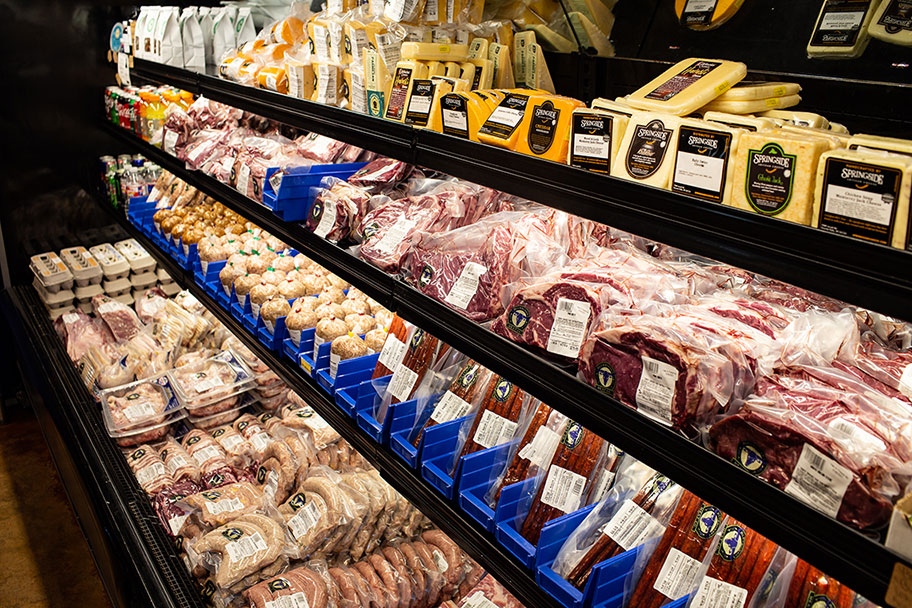Check Out the Local Taste at Bagley Farms Meat Market Edwardsville IL: Fresh and Delicious
Check Out the Local Taste at Bagley Farms Meat Market Edwardsville IL: Fresh and Delicious
Blog Article
Uncover the Art of the Butcher's Cut in a Modern Meat Market
In the ever-evolving landscape of contemporary meat markets, the butcher's cut has actually transcended its typical roots, merging old-time craftsmanship with modern practices. What truly sets the modern-day butcher apart is their capability to build a deeper connection between consumers and the beginnings of their meat.
Advancement of Butchery Methods

The mid-20th century saw butchery strategies further improved by clinical insights right into muscle mass biology and meat aging, enhancing both inflammation and taste. Developments like vacuum packaging and refrigeration prolonged item shelf-life, allowing butchers to expand offerings and enhance quality control. This duration likewise noted the rise of specific devices, such as band saws and meat slicers, which increased precision and performance in meat handling.
Computerized systems currently aid in tracking pet provenance and maximizing cuts to meet certain consumer choices. In addition, a revival in artisanal butchery has emerged, blending conventional abilities with modern-day knowledge to cater to consumers seeking moral and lasting meat options.

Comprehending Meat Cuts

Understanding the complexities of meat cuts is essential for both butchers and consumers looking for top quality and worth. Each cut comes from a different component of the pet, passing on distinct flavors, structures, and food preparation methods. Mastery of these differences not only enhances cooking experiences but also makes best use of the energy of each carcass. For butchers, specific cuts show skill and respect for the craft, making sure very little waste and ideal yield.
The main classifications of meat cuts consist of primitive, sub-primal, and retail cuts. Primal cuts, such as the loin, rib, and chuck, are the large sections initially separated from the carcass. Butchers after that break these down additionally into sub-primal cuts, before finally producing retail cuts readily available to consumers, like ribeye or tenderloin. Each stage needs mindful attention to anatomical framework and muscle composition.
Recognizing muscular tissue composition is essential; muscles used a lot more frequently by the animal tend to be tougher and are best matched for slow-moving cooking methods, while less-used muscular tissues, like those located in the loin, are a lot more tender and suitable for cooking or roasting. Experience with these distinctions encourages customers to make informed options, enhancing their cooking ventures.
Picking Top Quality Meat
Selecting the ideal meat includes even more than simply picking a visually enticing item from the display. The art of picking top quality meat calls for a critical eye and expertise of particular qualities that symbolize freshness and excellence.
Second of all, think about the marbling, which describes the white streaks of fat within the muscle mass. Proper marbling is a key indication of inflammation and taste, as it thaws throughout cooking, improving the meat's juiciness. Remember, greater marbling often associates with exceptional quality cuts, such as USDA Prime.
Appearance is an additional essential factor; meat should feel solid to the touch, not slimy or overly soft. Furthermore, be conscious of the fragrance. Fresh meat should have a tidy, neutral smell, devoid of any kind of sour or off-putting smells.
Matching Cuts With Food Preparation Methods
Successfully combining why not check here cuts of meat with the suitable cooking techniques is important for attaining optimum taste and structure. These methods improve the meat's natural tastes and guarantee a juicy coating.
Conversely, tougher cuts like brisket and chuck roast are rich in collagen, which damages down into jelly when cooked slowly. These cuts are excellent for braising or slow roasting, enabling the meat to soften with time and create deep, intricate flavors. In a similar way, cuts such as brief ribs and pork shoulder prosper with slow-cooking approaches, where expanded cooking times change their robust textures right into delicious recipes.
Lamb shanks and oxtail, which call for long term cooking to soften, are best candidates for cooking or slow-moving simmering. These approaches coax out abundant, hearty tastes while preserving dampness. By understanding the distinct qualities of each cut, cooks and home chefs alike can boost their cooking productions, making sure each dish is both satisfying and remarkable.
The Butcher's Duty Today
Browsing the evolving landscape of the contemporary meat market, the butcher's role today prolongs beyond mere preparation of cuts. Contemporary butchers are culinary craftsmens, instructors, and advocates for lasting practices.
In enhancement to crafting specific cuts, butchers currently imp source involve straight with clients, using cooking recommendations and customizing selections to match private requirements and choices. Their experience in meat aging, marbling, and flavor profiles equips consumers to make informed choices, improving their culinary experiences. This personalized service exhibits the butcher's developing role as a relied on advisor in the kitchen.
Additionally, butchers are essential in minimizing waste, making use of whole animals to create varied products such as sausages and supplies - bagley farms meat market edwardsville il. This thorough method not only values the pet yet likewise straightens with modern sustainability objectives. In this means, the contemporary butcher embodies both tradition and technology, adjusting to an ever-changing market while protecting the artistry and stability of their craft

Conclusion
The contemporary butcher's craft intricately weaves standard strategies with Get More Information contemporary advancements, stressing lasting practices and moral sourcing. Proficiency in understanding varied meat cuts and high quality indications empowers butchers to provide enlightened suggestions, straightening certain cuts with optimal cooking techniques. This competence not only elevates cooking experiences yet additionally enhances the link in between customers and the origins of their food. By recognizing historical techniques while welcoming modern demands, the butcher's duty continues to be essential in today's innovative meat market.
Report this page